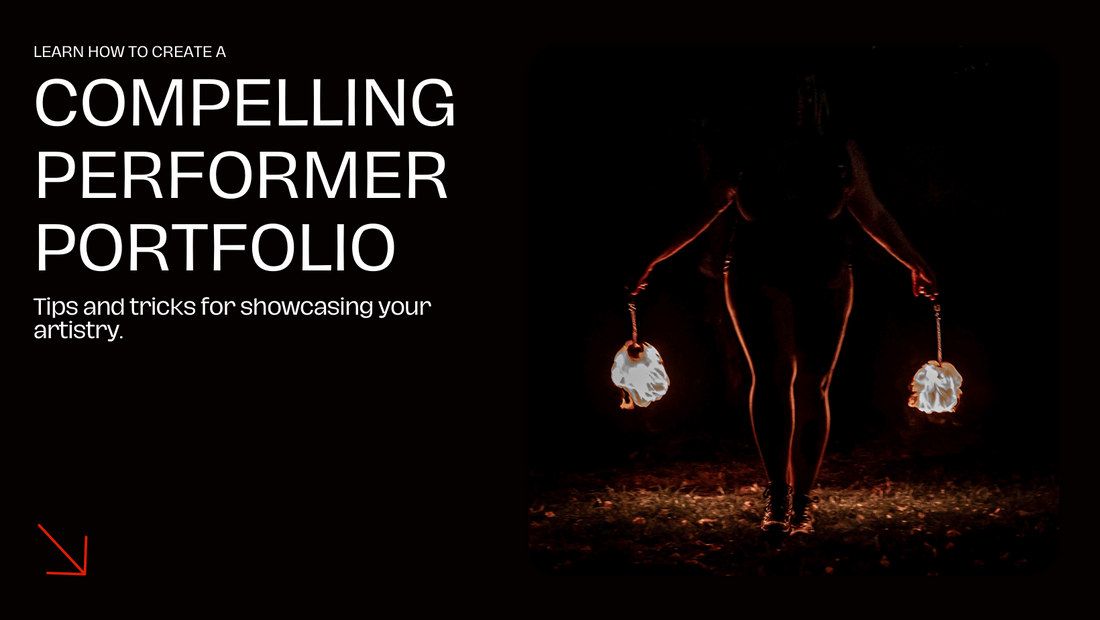Creating a compelling portfolio or resume as a fire dancer requires careful curation and attention to detail. By selecting your best fire dancing performances, highlighting your safety measures, and being specific about your skills and experience, you can showcase your talent and make a memorable impression on potential clients or employers.
Here are some tips on how to create a compelling portfolio or resume:
1. Choose your best fire dancing performances: When selecting pieces to include in your portfolio, make sure they demonstrate your most vital fire dancing skills and experience. Consider using photos or videos that showcase your unique style and technique.
2. Highlight your safety measures: Safety is a top priority in fire dancing, so include information about your safety measures during performances. Your safety information can consist of details about the fire equipment you use, your training in fire safety, and any certifications you have.
3. Include your performance history: Your portfolio or resume should list your past fire dancing performances. That list can demonstrate your experience and range as a fire dancer and give potential clients or employers an idea of the types of performances you are capable of.
4. Be specific about your skills: When describing your fire dancing skills, be specific about the techniques you use and the types of performances you specialize in. Use concrete examples to demonstrate your abilities and accomplishments.
5. Keep it concise: Your portfolio or resume should be straightforward and easy to navigate. Avoid lengthy descriptions or unnecessary details. Focus on what sets you apart as a fire dancer and makes you a great performer.
6. Include a high-quality fire dancing photo: A professional headshot or action shot can help you make a solid first impression. Make sure it is high-quality and highlights your unique fire dancing style.
7. Update regularly: Keep your portfolio or resume updated with your most recent fire dancing performances and accomplishments. Set a reminder to review and update it every few months.
As a performer, creating a portfolio is an excellent way to showcase your talent and experience to potential clients or employers. However, choosing the correct format for your portfolio can be a challenge. With so many options available, how do you choose the best one? In this article, we'll explore some of the most popular portfolio formats for performers and help you decide which is correct.
1. Digital Portfolio
A digital portfolio is an online collection of your work that you can easily share with others. It's a popular choice for performers because it allows you to include videos, photos, and other multimedia elements that showcase your talent. Digital portfolios can be hosted on your website, social media platforms, or portfolio hosting sites like Behance or Dribbble. They are easy to update and can be accessed from anywhere, making them a convenient way to showcase your work.
2. Physical Portfolio
A physical portfolio is a tangible collection of your work that you can bring to meetings or auditions. It's a great option if you want to showcase your work more tactilely. Physical portfolios can include photos, flyers, posters, and other printed materials highlighting your performer experience. They are often presented in a binder or folder and can be customized to fit your brand or style.
3. Video Portfolio
A video portfolio is a compilation of your performances captured on video. It's an excellent option for performers who want to highlight their skills and technique. Video portfolios can be hosted on your website or social media channels or uploaded to video-sharing platforms like YouTube or Vimeo. They allow you to showcase your movement and expression in a way that photos and text cannot.
4. Audio Portfolio
An audio portfolio is a collection of your music or voice performances captured on audio. It's an excellent choice for musicians, singers, or voice actors who want to showcase their vocal abilities. Audio portfolios can be hosted on your website or shared through streaming platforms like SoundCloud or Spotify. They allow you to highlight your range and style as a performer.
Choosing the proper format for your portfolio ultimately depends on your goals and personal preferences. Consider your target audience, the type of performances you specialize in, and the media that best showcases your talent. If you're starting as a performer, a digital portfolio may be the best option, as it's easy to create and update. A physical portfolio may be a more impressive way to showcase your experience and expertise if you're a seasoned performer.
In conclusion, creating a portfolio as a performer is an essential step in promoting yourself to potential clients or employers. By choosing the correct format, you can showcase your talent and experience in a way that highlights your unique skills and sets you apart from other performers. Experiment with different portfolio formats until you find the one that works best for you and your brand. Remember, your portfolio reflects you as a performer, so make sure it's professional, engaging, and memorable!


2 comments
Hi, my name is DangerMouse, and I’m a pyro. It’s been a bit over a year since I did any fire performing, and I feel really bad about that… this needs to change. Thank you for listening. I see you, and all research worked. ;-)
This is great information. Similar concept to how I set up my poetry performance CV.